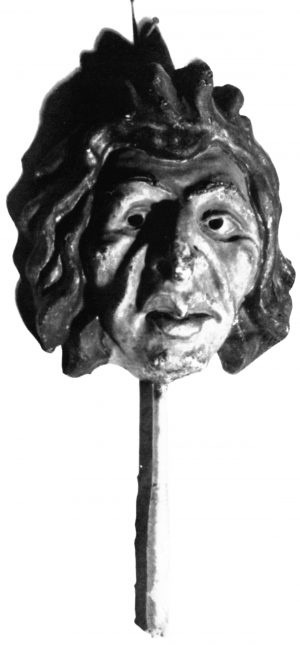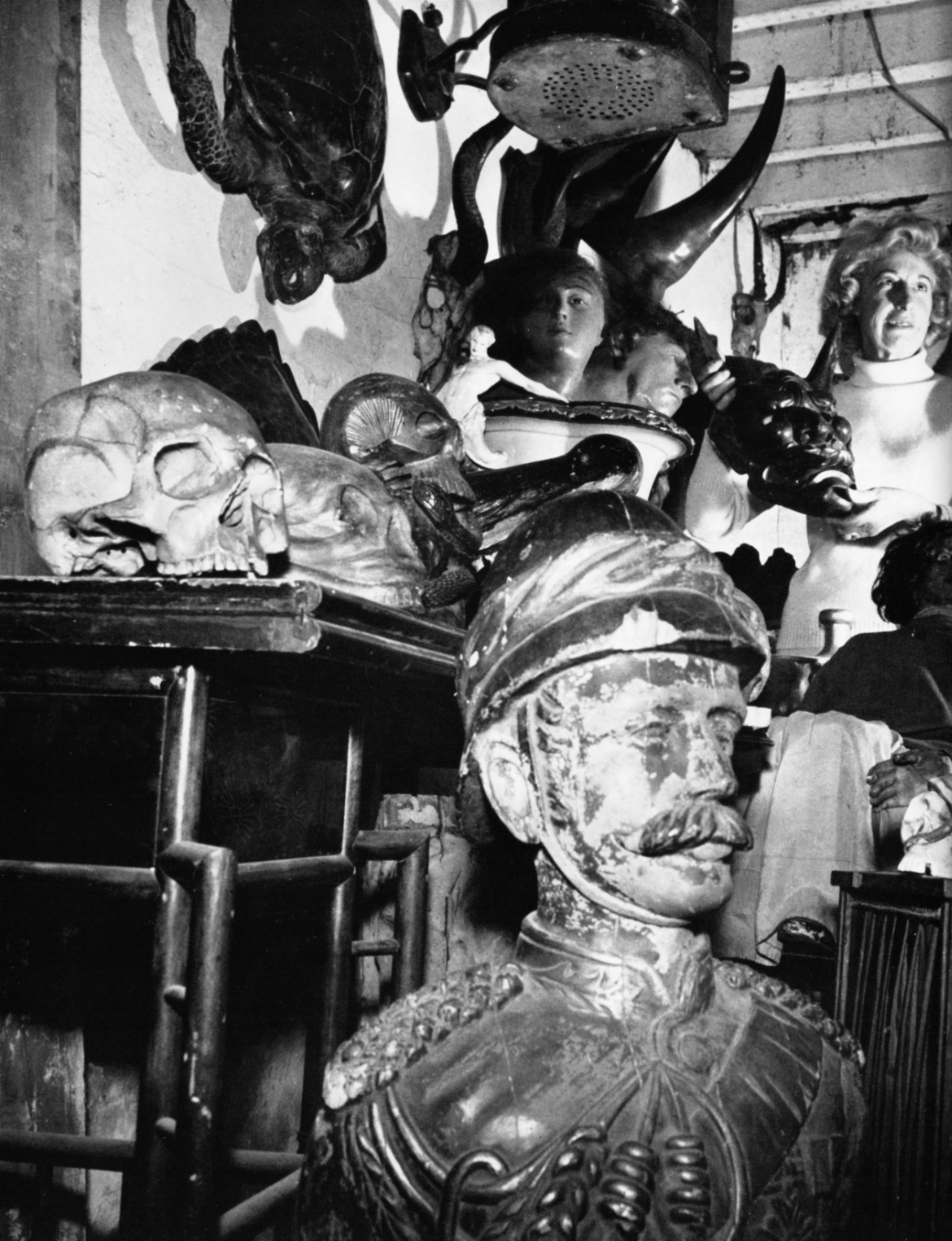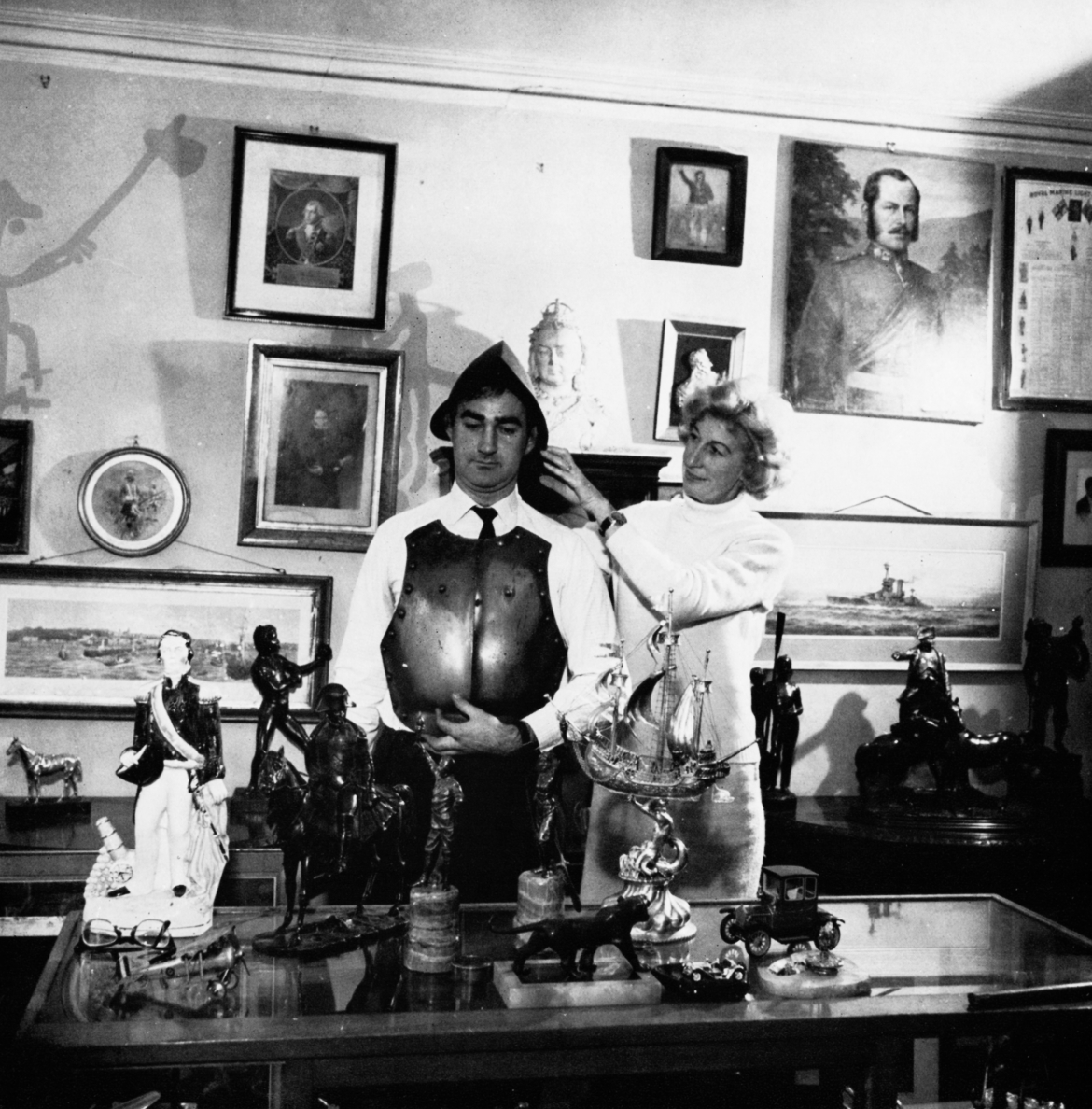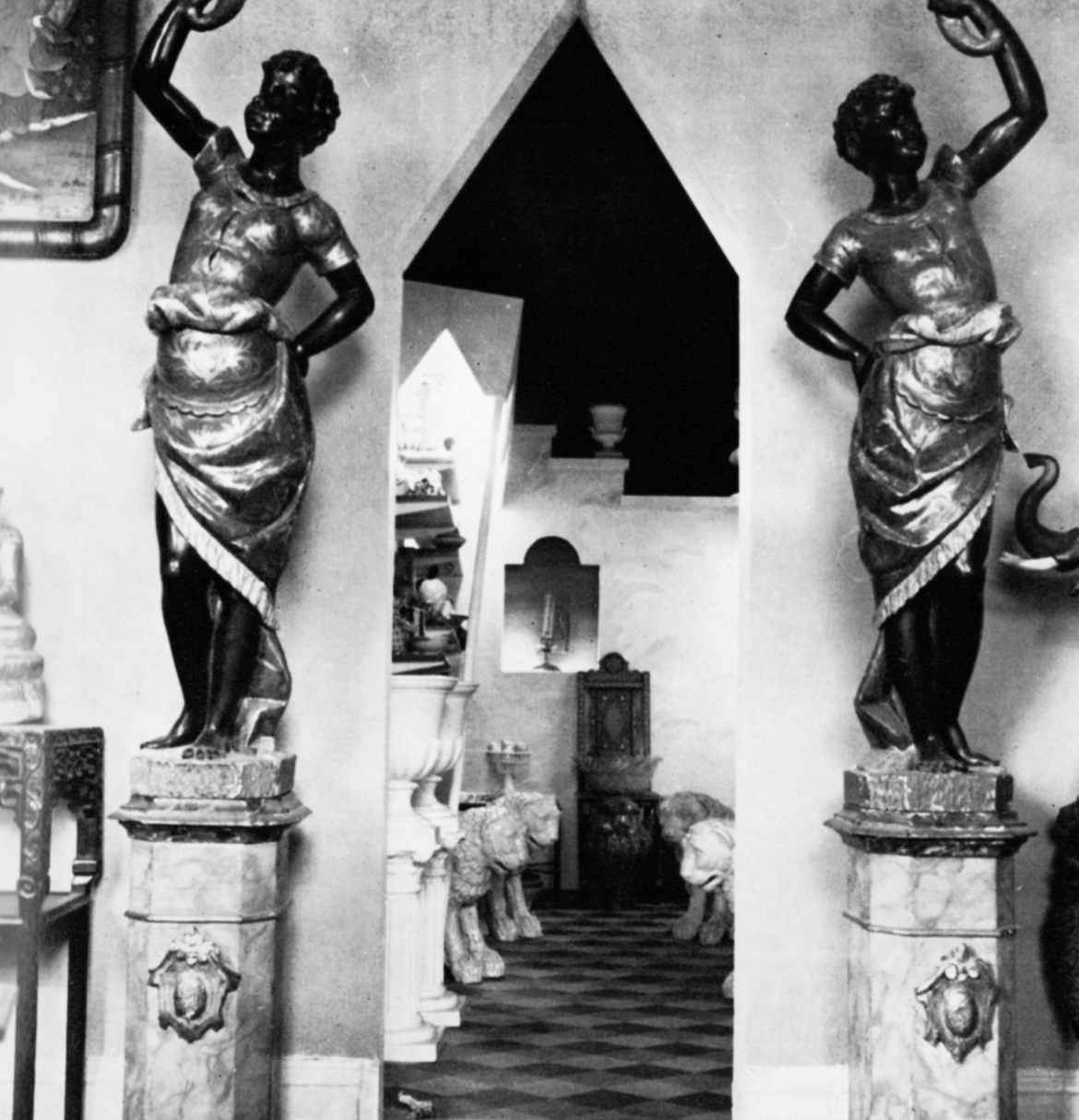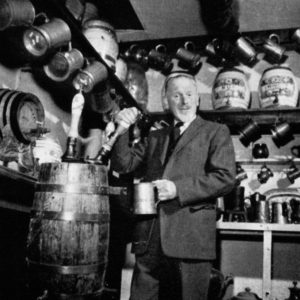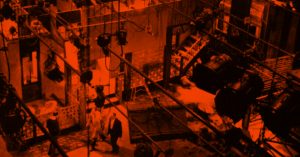Voodoo and murderers in Hampstead
Inside Rediffusion’s external props company
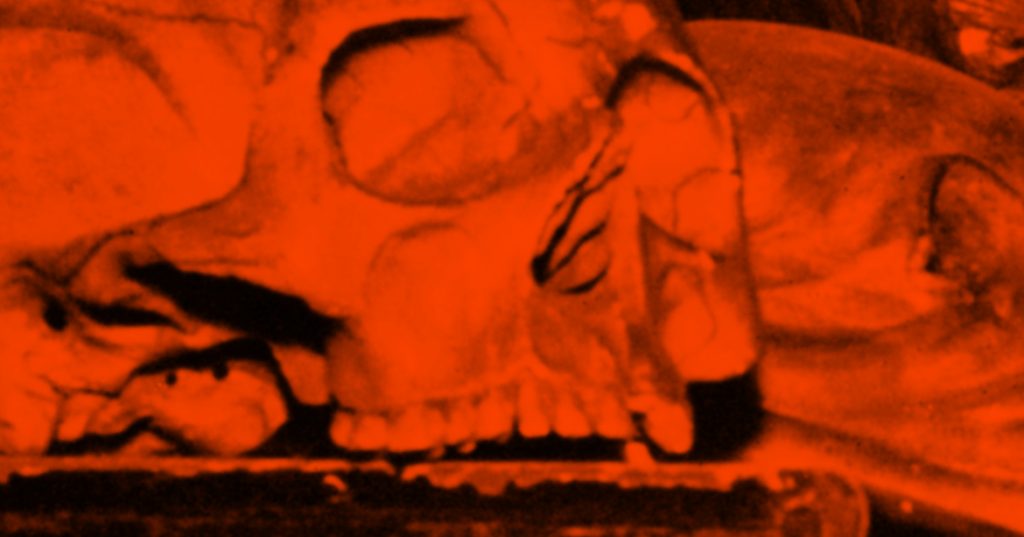
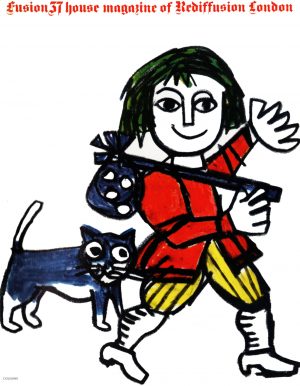
A two-headed figure, half man, half woman, looms at you out of the gloom. You turn – and a wild-cat, eyes a-glint and jaws snarling, is ready to pounce. Everywhere you look, nightmarish objects stare back at you.
‘This is our horror room,’ says Mary Paul, whose husband Ken is one of Rediffusion’s chief props suppliers.
Ken Paul’s sprawling premises occupy two shops, three storeys high, in England’s Lane, a part of Hampstead still village-y in character. They house thousands of articles for hire to stage, screen and television companies.
Most of the props borrowed for Rediffusion’s ‘Crane’ come from here, because Ken Paul, while stocking all sorts of antique and unusual props, specialises in Moorish and Eastern pieces. You want a hookah? There’s a choice of half a dozen over in the corner. We’re in a room entirely given over to Eastern stuff, in surroundings as exotic as anything in the Arabian Nights.
Some of the latest additions in this room are those bought from the set of a recent film made in the Near East. (A reversal of the usual procedure, and one that is not too common, for most of the articles stocked are genuine and not reproductions, and are bought privately or at auctions.)
‘When the stuff came in, we noticed the most peculiar smell,’ says Mrs Paul. It was very puzzling – until we realised it was a hang-over from contact with camels.’ Mrs Paul is a blonde, vivacious woman. Her husband, who has a trim, pointed beard, is slightly more reserved. They married in 1942, and started up in business with £100 [about £3,500 in today’s money, allowing for inflation – Ed].
‘We got the lease of one of these shops – the other we only acquired recently – and did it up ourselves. We started with hardly anything – a tandem in bits, an enormous grand piano, a rocking-horse and a doll’s pram.’
Mrs Paul recounts this as if it were all a huge joke – one that has gone on being funny all these years. She’s not always in the shop, but when she is there she finds the business great fun. ‘It’s not like work at all.’
She continues: ‘When we began, we intended just to sell antiques. We didn’t think of lending them until a friend gave us the idea. Our first film order was for “The Scarlet Pimpernel”. It was worth £25 and we were thrilled.’ [The film was 1934, too early for the 1942 establishment of the business; the ATV/ITC TV series was 1955, which seems too late. If the TV series is what’s intended, £25 is £560 in today’s money]
The normal hiring fee is five per cent of the original cost of the article for each week of hire. Where the same article will be needed maybe for months – for the full run of a TV series, for instance – a special fee is arranged.
Ken Paul explains this as he hurries about in the office quarters at the back of the shop. This is where the administrative work is carried out by the Paul’s manager and two assistants. It’s called an office, but really it’s more of another props room.
A huge Victorian cabinet stands along one side, covered with a multitude of unrelated objects. Part of the space inside is used as a drinks cupboard, the rest holds neat drawers full of snuff-boxes, of all shapes, sizes and antiquities; fans of ostrich feathers, lace, and painted satin; and hundreds of postcards. (‘You get people asking what Portofino or somewhere looked like 50 years ago, and you can usually show them.’)
Cups of half-drunk tea or coffee lie scattered among the accounts and order books. You expect to turn the china upside-down and find it marked ‘Spode’, ‘Minton’ or even ‘Worcester’.
You pick up a cup to see if you’re right and you’re distracted from your aim when you find that the cups are resting on a glass-topped display cabinet filled with fabulous jewels.
‘They’re not all real, actually,’ you are told. ‘This diamond set – the tiara, bracelet and necklace – they’re paste. But they’re very fine quality. They came from a duchess who had them copied exactly from her real set, which she kept in the bank.’
There is jewellery of all periods and types. ‘We’re very good on pawn-shop settings. Rediffusion usually comes to us if they need a pawn-shop in “No Hiding Place” for example.’
Jewellery was among the items on the pages-long list of props that Rediffusion hired from Ken Paul for the ‘Crime and Punishment’ drama production. There was also a samovar on the list, a Victorian doll’s pram and two Russian icons.
‘The icons were presents to our two daughters when they were younger,’ says Mary Paul. ‘When we started borrowing them to hire out, they asked for the fee. They’ve been borrowed so often now that they’re part of the stock.’
Another prop that originally belonged to the Paul children is a huge Victorian doll.
It now lives down in the basement, in the room that could adequately rival Madame Tussaud’s ‘Chamber of Horrors’ for monstrosities.
A life-sized stuffed bear rears up on his hind legs as if to pounce when you reach the bottom of the stairs. Behind him, a hideous stuffed monkey. Lying on the floor, glowing wickedly and translucently, the wax model heads of a number of mass murderers.
‘There were more masks,’ you are told, ‘but they were borrowed so often that in the end they melted under the hot lights.’ More grotesque objects are upstairs, among the ethnographical gear, with voodoo carved figures and masks.
Then there’s the naval and military room, with cutlasses, globes, daggers, guns, maps, portraits and heavy bronzes. From here come some of the props which appear weekly in the ‘H.M.S. Paradise’ episodes. Another speciality is blackamoors, ebony-coloured figures beautifully painted, some of them extremely rare and valuable, as is the greater part of the stock.
‘When we’ve supplied a lot of the props, we like to see the final production – whether it’s on television, the stage or the screen,’ say the Pauls. ‘Sometimes, though, it can be quite a harrowing experience. You see a big fight scene, all your stuff gets knocked about, and you think – “Now I know why so-and-so came back damaged”. It’s sad … but you can’t mind too much, and on the whole people are very good about looking after our props.’
After the horror room and the military room, it is a relief to wander into the gracious atmosphere of the Victoriana room, where all the trimmings of that leisurely age are stored.
It is an even greater relief to pass into the next room and find yourself in a fully-equipped pub – bar, stools, prettily-painted handles for pulling a pint.
‘All fake again,’ you’re told.
But if you’re lucky, there’s a real drink waiting for you in that Victorian cabinet…
About the author
We have no information on Carole. If you know anything about her, please get in touch.

